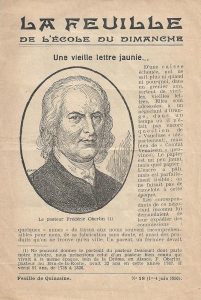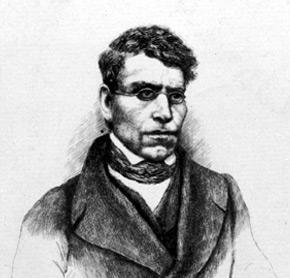The Society for the History of French Protestantism
As the Protestant community had recovered its identity, it was out of the question to leave it to the Roman Catholic Church to relate its history. Yet this was virtually still the case throughout the first third of the nineteenth century. Weren’t Calvin, Coligny, Rohan and many others presented as ambitious politicians whose main concern was to betray the interest of the Church and of France ? The truth had to be established and the emblematic motto of the city of Geneva was to become that of the Protestant community : “Post tenebras, lux”.
The Society for the History of French Protestantism was founded in 1852 with the purpose of writing the history of French Protestantism in as objective a way as possible (“en toute raison”). Charles Read took the initiative of starting the Society and François Guizot supervised its work. It aimed at searching for, gathering and making available all unpublished or printed documents dealing with the French speaking Protestant Churches. It immediately and actively backed the project of the Haag brothers : that of drawing up an inventory of Protestants since the Reformation (10 volumes of Protestant France, which comprised 4,700 files).
Besides this intensive gathering of archives and documents – by the end of the nineteenth century, the Society had acquired 30,000 volumes and 500 manuscripts in the library located in Saints-Pères Street – it contributed to give real visibility to French Protestantism with all sorts of initiatives that helped create “places of living memory” (Lieux de mémoire). It instituted the annual Reformation Day, the Gathering at the Desert Museum, and the Pilgrimage to the Constance Tower. It erected the Statue of Coligny outside the Oratory Temple (1880).It developed links with Huguenot sister societies in the United States and Germany. It created various awards.
The Society was recognized as a non profit making organisation for public benefit in 1870. As soon as it was founded, it published a History Bulletin. It facilitated its publishing work by establishing contracts with regular publishers, the first one being the Fischbacher Company.
Society for Religious Tracts
Founded in 1822 with the financial help of the London Society bearing the same name, this organisation aimed at spreading the Gospel by selling at low price or simply distributing short religious writings. Among the regular publications featured the Yearbook of good advice (l’Almanach des bons conseils) with 130,000 copies printed in 1846 and 261,000 in 1890 and the Friend of the Young (l’Ami de la Jeunesse). Alexandre Vinet, Adolphe Monod, Napoleon Roussel (1805-1878) were the Society’s first administrators.
In a similar way the Library of schools and families wished to “fight against bad media targeting, mainly of farm labourers and factory workers” (lutter contre la mauvaise presse, surtout auprès des paysans et des ouvriers). The aim was to make available to the masses religious tracts of a spiritually uplifting nature as well as historical documents and healthy debates so that “the issues that are of interest to the masses be dealt with in a Christian way” (afin que les questions qui preoccupant aujourd’hui les masses soient abordées dans un esprit Chrétien).
Society in favour of Elementary Education among French Protestants
The laws that gave rise to public education during the Second Napoleonic Empire had entrusted the Brothers of the Christian Schools with primary education. This gradually resulted in a rising concern for the need of an education capable of meeting the demands of Protestant families. The Society was founded in 1829 when Cuvier (1769-1832) was Superintendent of non Roman Catholic Churches within the Ministry of the Interior. As early as 1828, a Model School had been founded in the Protestant region of Dieulefit (Drôme). Its aim was to enact one of the main principles of the Reformation : “to enable all Protestants to read the Gospel, to meditate and judge by themselves the divine lessons and sublime truths contained within it” (mettre chaque protestant en état de lire l’évangile, de méditer, de juger lui-même les divines leçons, les sublimes vérités qu’il renferme) . The Marquis de Jaucourt was the Society’s first chairman. Guizot was one of the active members of the foundation committee and its chairman from 1852 to 1872.
It must be noted that the Society continued to exist after the laws on primary education had been implemented in 1833 by Guizot who, by then, had become Minister for Public Education. In fact, these laws did not cover all existing problems.
Throughout the second Napoleonic Empire and at the beginning of the Third Republic, the Society focused its attention on girls’ and adults’ education as well as on teachers’ training. By the end of the nineteenth century it had financed 110 private schools.
The French Sunday Schools' Society
In 1852, at the very beginning of the Second Napoleonic Empire, when Protestant Churches had gained official recognition, Pastor Cook founded the “French Sunday Schools”. The aim was to “instruct young Protestants in the word of God” (d’instruire la jeunesse protestante dans la Parole de Dieu), by using relevant teaching methods and materials ranging from reward tokens to hymn books, periodicals (the Sunday School Magazine) and illustrated leaflets. Some 140 education centres were immediately created, 13 of which were in Paris. The number kept growing and in 1880 reached over 1,000. This activity grew and improved until the present day.
Sunday School hymns are a typical example of this evolution. Such hymns as were composed from the second half of the nineteenth century until the post World War I period were a mixture of warlike patriotism and morality expressed in terms that nowadays would make one smile : (“With the fluttering Flag” – Dans le Drapeau qui frissonne) (“Mon enfant, redoute l’insincérité” – My child, be not insincere).
Needless to say, teaching material is of primary importance. It is regularly renewed by the Protestant Federation of France to which the Society is affiliated.












